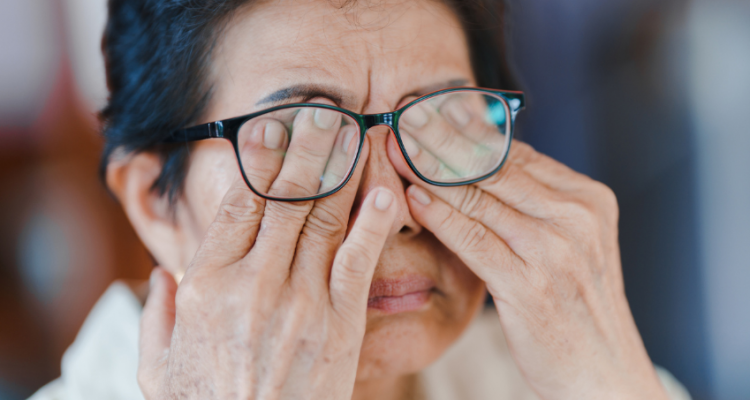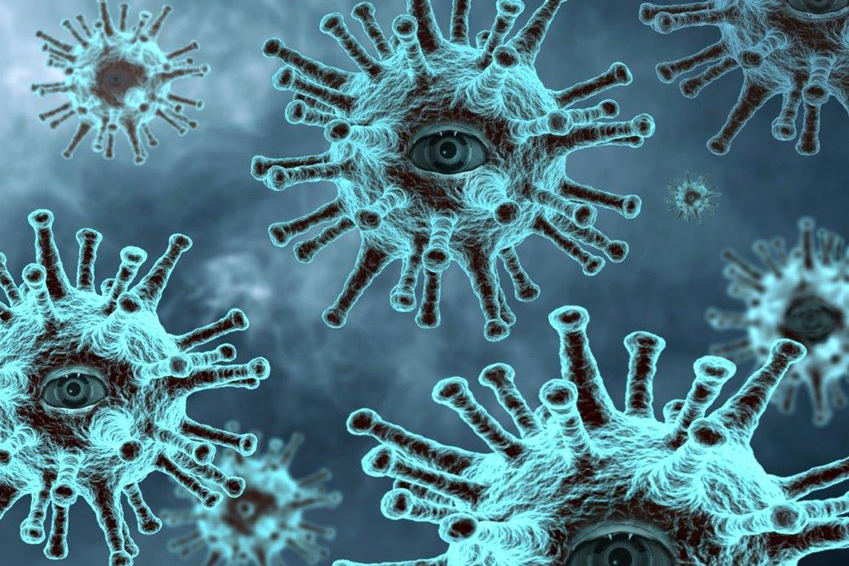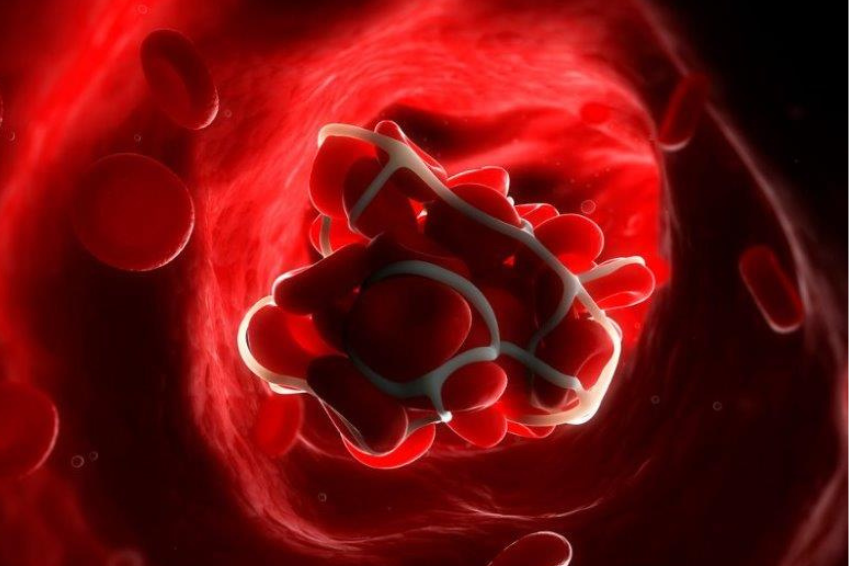In a cross-sectional study published in the British Journal of Ophthalmology, patients who were slow to recover from symptoms after surviving COVID-19 showed a reduced density of nerve fibres in the cornea, while the number of dendritic cells there appears to be increased. This could be an indication of a neurological cause of the secondary disease.
The cornea of the eye is one of the locations with the highest density of nerve cells outside the brain. The branches of the ophthalmic nerve, one of the three main branches of the trigeminal nerve, are mainly responsible for the eyelid closure reflex, which protects the eye from injury. Since the cornea is transparent, the nerve fibres can be observed in living humans – with a confocal microscope even at higher magnification.
A team led by Rayaz Malik from the University of Manchester already used the technique in earlier studies to describe changes in the nerve cells in diabetic neuropathy. They also noticed an increase in dendritic cells, which are part of the immune system: They are antigen-presenting cells in the tissue responsible for detecting pathogens.
Now, the researchers have examined the cornea of 40 patients who had COVID-19 and 22 of whom had not fully recovered after 3.7 months, as their answers in a post-COVID questionnaire from the National Institute of Health and Clinical Excellence showed. The comparison group was 30 healthy people of the same age.
Ophthalmologists Find Evidence of Possible Nerve Damage
The examinations with the confocal microscope indicate nerve damage in the cornea and a possible activation of the dendritic cells. In post-COVID patients, the density of the nerve fibres and the density of the nerve branches as well as the length of the nerve fibres in the cornea were reduced. The differences existed both compared to healthy individuals and to the patients without post-COVID. The differences were significant when healthy individuals were compared with post-COVID patients who suffered from neurological complaints.
In the dendritic cells, both the number of “mature” cells (with the typical extensions of the cells) and the number of “immature” cells were increased. According to Malik, this indicates an increased activation of the immune system, which could occur, for example, when the nerves are infected with SARS-CoV-2. However, the resolution of confocal microscopy is too low to make viruses visible in the tissue. Other investigations have not been able to reliably detect viruses in nerve tissue either. The pathogenesis of post COVID is still unclear.
Study in Macular Degeneration and Post Covid Syndrome / Long Covid Syndrome
One of the limitations of the study, apart from the small number of participants, is that the patients were only examined once and therefore it remains unclear whether the changes in the cornea also disappear with the expected recovery. The symptoms of the patients were determined in a questionnaire, but not objectified by further examinations (which is usually not possible in post COVID).
If the results were confirmed in further examinations, then in principle an ophthalmological examination could confirm the diagnosis of post COVID. The findings would also support a neurological genesis of the disease. However, this is likely to be far-reaching speculation at present.
Laboratory Examination for Post-Covid Syndrome / Long-Covid Syndrome
If you have a chronic degenerative eye disease such as macular degeneration and suffer from post-covid syndrome, you should contact your doctor or us to have special parameters checked in your blood. As described above, SARS-COV-2 can attack other organs besides the lungs and heart.
Performance Components of a Laboratory Profile to Investigate the Relationship Between Long Covid Syndrome / Post Covid Syndrome and Macular Degeneration
- Quantitative antibody detection should be performed
- An analysis of the health status
- Prophylactic examination to see how great the body’s resistance is in the event of a first-time or recurring infection.
- Targeted support with vitamins and nutrients can then mitigate the long-term effects.






Leave a Reply